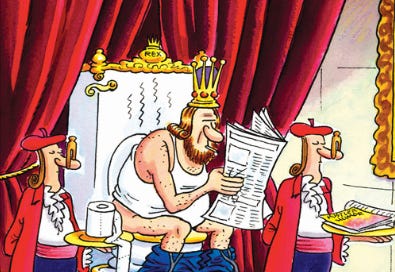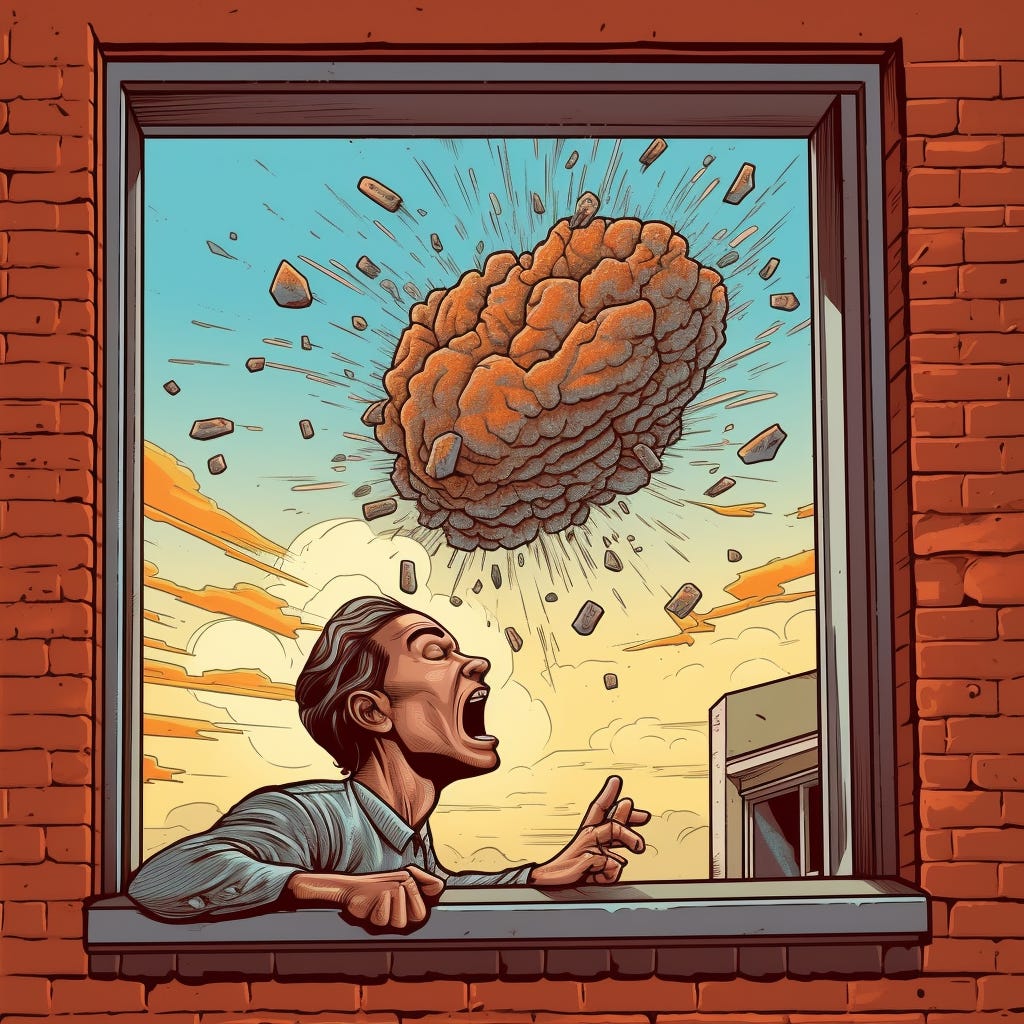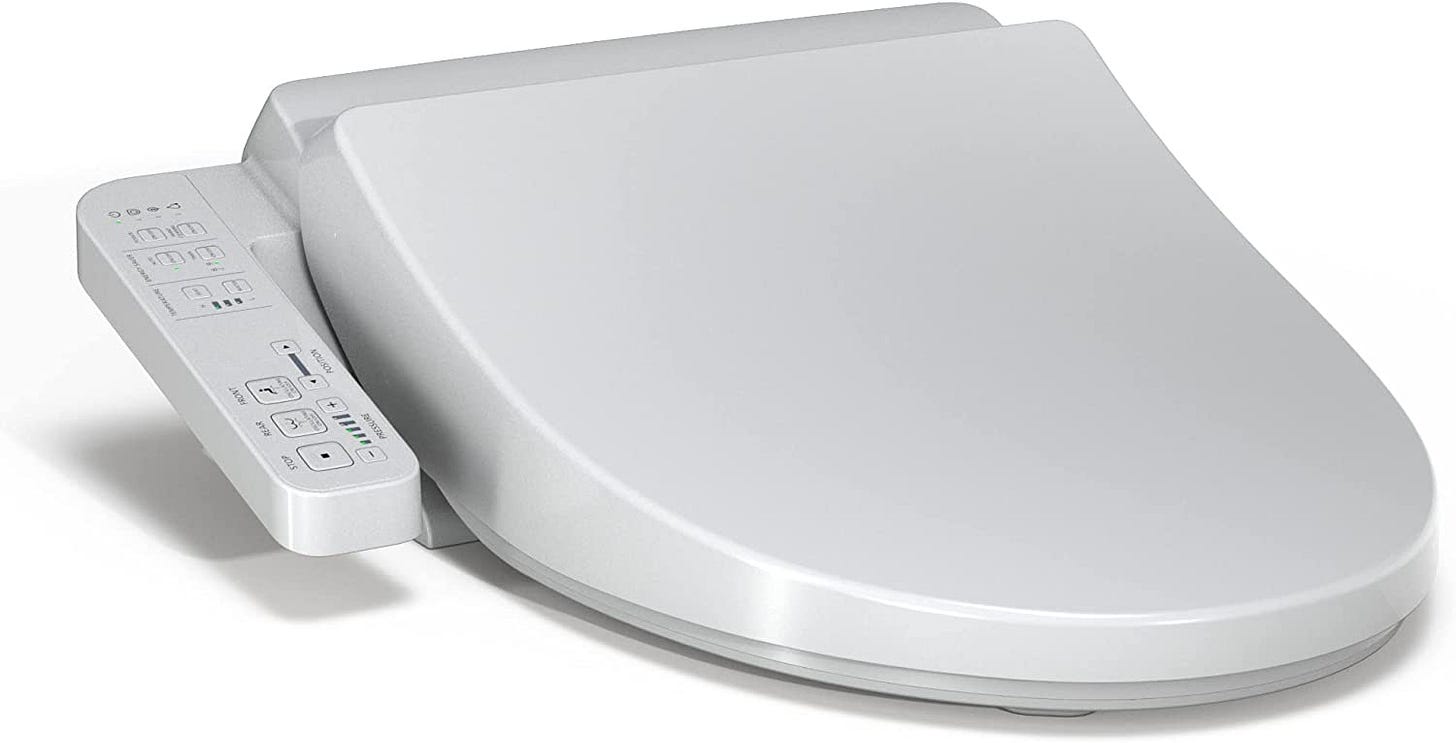We find ourselves at a crossroads where we need to dispel preconceptions and engage in an earnest, if somewhat unconventional conversation about a subject that seldom finds itself under the American spotlight - the bidet. A staple in other parts of the world, this often misunderstood bathroom fixture warrants our attention, and it's time to unlearn everything we thought we knew about bidets.
Think back to the first days of the pandemic. Remember the shortages and runs on toilet paper. TOILET PAPER? Everything was closing, sporting events were being cancelled, but it didn’t hit any of us personally until we couldn’t find Cottenelle or Charmin at the supermarket. It was like the world was falling apart. People hoarding as much as they could find. Apocalyptic visions of “So this is really how The Walking Dead started” were prevalent. No store had any, then when they did it was ravaged like a bunch of shoppers on Black Friday picking up the hot presents for Christmas. Bidets make that obsolete, and pays for itself over the long run since you are no longer paying for T.P..
Embedded in the fabric of American culture are baseball, apple pie, and a slightly awkward avoidance of discussing the finer details of personal hygiene. The cultural conditioning is such that 'butt stuff' discussions tend to veer towards the realm of discomfort. It's high time we challenge this norm, primarily because the reluctance to converse is leading us to miss out on something remarkably beneficial.
My maiden rendezvous with a bidet was on a visit to Japan. Upon entering my hotel bathroom, I was taken aback by the hi-tech toilet brimming with buttons, each beckoning me towards an uncharted experience. With a spirit that craves adventure, I swiftly found myself seated, intrigued by the foreign labels adorning each button. Undeterred by the language barrier and pondering the worst-case scenarios, I plunged into the experience, randomly selecting buttons. Thus began my unexpected, yet profound, love affair with bidets...
When advocating for bidets, one powerful analogy comes to mind: envision your house exterior smeared in mud. Would your first instinct be to reach for a towel to swipe it off? Certainly not! That would merely spread the mess around. Instead, you'd instinctively use a hose for a thorough cleanse. With this in mind, why should we subject our bodies to lesser standards of cleanliness than our homes? Embrace the bidet, and grant your backside the cleanliness it deserves!
Having established that eschewing water for backside cleansing is a practice best left to prehistoric times, the next question is: how does one venture into the fascinating realm of bidets? Contrary to popular belief, it's not a Herculean task.
Let's clear the air around what bidets are not. The peculiar toilet-like fixtures that appear as though you have to perform an awkward shuffle and squat? Those aren't the bidets we're referring to.
Not this:
But this:
In our exploration of bidets, what we're fundamentally discussing is a sophisticated upgrade to your existing toilet seat. Embarking on this journey towards enhanced personal hygiene is as straightforward as placing an order on a platform as accessible as Amazon. The installation process is swift, devoid of any significant hassles, and can be completed in mere minutes. So, let's bid adieu to antiquated toilet practices and enthusiastically welcome the invigorating revolution of the bidet.
We value your time and have therefore provided a convenient link for your first purchase: https://amzn.to/42mH69F
When you're on the hunt for your inaugural bidet, there are a few key factors to keep in mind:
Opt for a heated seat: A non-heated seat is an inferior choice (especially in northern climes during the wintertime) and essentially a candidate for the waste bin.
Seek out a warm water spray feature: This is an essential element for comfort and hygiene.
Disregard the air-dryer: This is often marketed as a useful feature, but in reality, it doesn't hold much value.
Consider the need for remote control: Unless you plan on playfully controlling the bidet settings for unsuspecting guests from outside the bathroom, there's little practical need for a remote.
Evaluate power requirements: Most high-quality bidets require an electrical outlet. Be prepared with an extension cord, as your bathroom layout may necessitate it.
And with that, you have everything you need for a future of clean backsides. Enjoy!!
PurpleAmerica’s Obscure Fact of the Day
The question sometime arises, how did the world get by BEFORE toilet paper? Well, the Greeks used “ostraca” which were ceramic pieces similar to pieces of a broken flowerpot, with smoothed edges. Early Chinese culture used a long wooden stick shaped like a spatula. For many earlier cultures it was just common for people to venture out into shallow water and do their business, going #2 and “self cleaning” at the same time, killing two birds with one stone; often rivers or lakes contained pre-ordained areas for use, but this was impractical for larger bodies of water because of tides (when low tide went out, there was a “dump” of well, dumps).
In North America during the 18th and 19th centuries, objects like corncobs and seashells were common in outhouses. However, by the mid-19th century, toilet paper was patented and becoming more available in high end establishments. First patented by Joseph Gayetty, Gayetty printed his name on each sheet, which were folded (not on a roll) and the sheets contained aloe. However, it initially failed to make a widespread acceptance for one major reason.
And that reason was that there were cheaper alternatives available. The two most common were the Sears Catalog and the Farmer’s Almanac, large voluminous books that encouraged brief perusal, provided water closet users something to look at for entertainment, and required replacement less frequently than other pulp books. Often left in outhouses, users would skim and then tear a page for use. The makers of the Farmer’s Almanac even sold it with a pre-punched hole in the corner to tie it so it wouldn’t be taken away, knowing where most people chose to read the book.
However, by the end of the 19th century, more in-house plumbing was available and homeowners needed something that was flushable. Paper mills had also become adept at spinning thin, cheap soft paper onto a cardboard roll, the standard of every washroom today. This is what really sparked the use of toilet paper universally.
Oh, and the patent for the toilet paper roll shows that the roll goes over the top.
Footnotes and Parting Thoughts
Let me know what you think of the page. Please share and comment!









